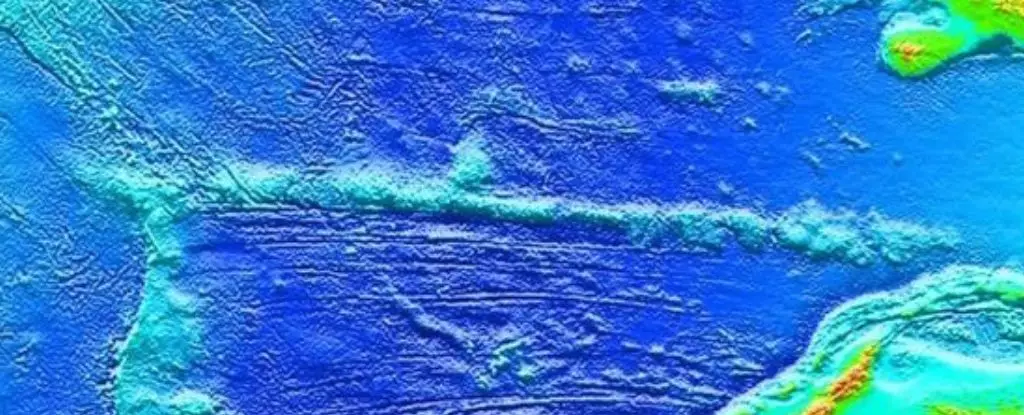Beneath the undulating surface of the Indian Ocean lies a striking geological feature, the Ninetyeast Ridge, which stretches over 5,000 kilometers—longer than the famed North American Rockies. This submerged mountain range, however, remains largely unknown to the general public, representing an intriguing chapter in Earth’s geological history that is only now unraveling. A recent study shines a light on the formation processes of the Ninetyeast Ridge, revealing unexpected insights into volcanic activity and tectonic movements.
Seamounts, or underwater volcanoes, are crucial elements of marine geology found in vast oceans. Initially, the prevailing belief was that these formations resulted from stationary hotspots in the Earth’s mantle, with tectonic plates gliding over them, similarly to a sewing machine creating stitches. However, this paradigm is transforming as research deepens. The recent revelations surrounding the Ninetyeast Ridge suggest a dynamic system wherein volcanoes were formed by a more mobile hotspot mechanism, comparable to a fountain pen that deposits ink as it moves across paper.
Geoscientists like Hugo Olierook from Curtin University have redefined our perception of how hot spots function. Instead of remaining dormant, the research indicates that the hotspot contributing to the Ninetyeast Ridge has shifted significantly over geological time. This movement of the hotspot not only creates unique geological formations but challenges previously held notions about volcanic activity in oceanic environments.
Integral to the formation of the Ninetyeast Ridge is the Kerguelen hotspot—a potent source of magma that has shaped significant portions of the Indian Ocean floor. Historical studies have hinted at the southwestward continent drift and the resultant transition of the hotspot’s position. However, this new comprehensive analysis, in collaboration with researchers across Australia, Sweden, China, and the United States, has employed sophisticated methods to analyze basalt samples from the ridge.
Findings indicate that as the Indian Plate drifted northwards, the Kerguelen hotspot’s influence evolved robustly. Researchers unveiled that the uplift of the Ninetyeast Ridge occurred at half the rate of seafloor spreading, demonstrating the substantial movement of the hotspot beneath the tectonic plates rather than being stationary as previously believed. This revelation introduces a more complex narrative in our understanding of geological processes and challenges the simplification of tectonic behavior.
What remains puzzling, however, is the mechanism behind the variable movement of the Kerguelen plume. The most widely accepted explanation posits that as the Indian plate moved northward, it encountered the Indian-Antarctic spreading ridge. This interaction appears to have allowed the plume to connect with the spreading ridge, resulting in continuous eruptions that shaped the ridge’s features. Eventually, as the spreading ridge shifted further away, the plume became disconnected, exemplifying the fluid dynamics within our planet’s mantle.
This fascinating interplay not only illustrates the sophistication of our planet’s tectonic systems but also serves as a critical reminder of Earth’s ever-changing landscape. As researchers strive to piece together the timelines and mechanisms of these geological phenomena, the narrative of the Ninetyeast Ridge will undoubtedly inform our understanding of future tectonic movements.
The study of the Ninetyeast Ridge holds far-reaching implications for earth sciences. For years, researchers have relied on age estimates to formulate models concerning tectonic plate movements. The insights garnered from this examination may refine or even reshape existing models, dethroning conventional wisdom and inviting new lines of inquiry about the geological dynamics of not only the Indian Ocean but also other oceans worldwide.
Overall, the unearthing of the Ninetyeast Ridge’s story encapsulates the ongoing quest to comprehend our planet’s intricate systems. It emphasizes the importance of innovative research methodologies and interdisciplinary collaboration in unraveling geological secrets that lie hidden beneath the waves. As we deepen our understanding of these formations, we not only gain insight into Earth’s past but also prepare to better understand the implications of tectonic movements for the future of our planet.


Leave a Reply